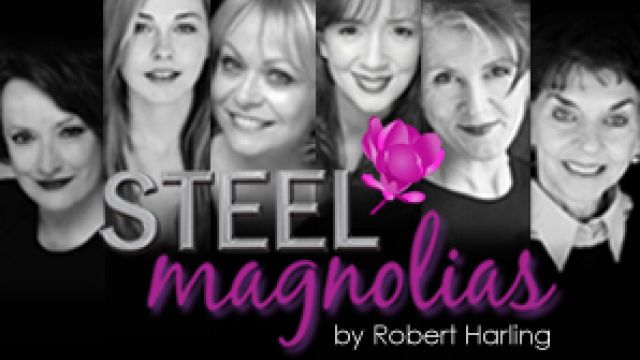TOURING MAGNOLIAS. Director Darren Yap speaks to Neil Litchfield
A new production of Robert Harling’s 1986 play Steel Magnolias, complete with a fully functioning hair dressing salon set, commenced a 23-week Australian tour on June 5, 2009, at Sydney’s Seymour Centre, followed by 100 performances across 30 venues. Steel Magnolias saw Jacki Weaver, Jennifer Hagan, Ana Maria Belo, Debra Lawrance, Geraldine Turner and Marian Frizelle touring in a Tarago to venues as far afield as Adelaide, Ballarat, Brisbane, Darwin, Melbourne, Launceston, Rockhampton, Tamworth and Wagga Wagga.
Director Darren Yap is no stranger to the challenges of mounting touring productions, having transferred such big shows as Mamma Mia and Miss Saigon into theatres around the world.
“It is absolutely a logistical nightmare. The depth and the width are always going to be effected, and therefore the movement of the piece. As we designed the actual world of the salon, Graham Maclean (designer) and I looked logistically at the reality of the smallest theatre to the biggest theatre, to the most unusual theatre, being the Seymour Centre.”
The result is a modular set, which can be used in part or as a whole.
“In a small regional venue where we lose depth and width, essentially we’ve had to find the ‘best of,’ that’s going to be able to be bumped in and out quickly.”
And the challenge of touring for the cast?
“Can you imagine these six eclectic, wonderful women in a Tarago, running around regional areas. I told the producers they should do a documentary on it because I think behind-the-scenes will be as fabulous as on stage.
“I’m imagining that because the heart of the piece is so much about tenderness, affection and the bonds of womanhood, which is complex in itself, that behind the scenes, in the Tarago, things like that will naturally look after themselves.”
And technical challenges for the cast?
“One of the sound people said ‘Do we need any of these theatres to be amplified?’ I said, ‘I don’t think with these women that’s going to be an issue.’ ”
Is there an analysis process when a performer walks into a new venue?
“I know for me, when I was acting, you start thinking about your physical journey, or whether the space is going to be empathetic to your voice. What I’ve loved about touring – this is the hippy, herbal part of me - but I think every venue has a kind of spiritual energy, and as actors part of the process is adjusting to that energy.”
And landing the piece?“I love it – that old school of walking into the space and knowing how much energy it’s going to take to land not only the big moments, but the gentle moments. That’s just part of the craft.”
The film of Steel Magnolias is very well known, with well-known performances. Is that an advantage or a disadvantage?
“It has had its advantages for me, in providing a shorthand for discussing the aesthetics of the piece – talking about the salon, or even the look of the women. As much as we’re not copying, and not intending to, it’s a useful way of talking about class, or culturally who they are.
“But the film is so clearly different to the play itself. As much as the film is beautiful, it’s very Hollywood, and it shows you the scenes that the women talk about. There are no men, of course, in the play.
“It’s great for the producers, because the film is also a great way of people recognising it.”
What about audience members entering a theatre with expectations / preconceptions based on the film?
“I am sure there are people who don’t know the play, and will expect to see the film. I guess part of my gig – which I always have to remind myself – is ‘Don’t try to be clever for the sake of being clever, tell the story.’
“One of the things that really drew me to it is its wonderful sense of humour and tenderness. I think we need a piece of theatre like that right now. The global financial crisis – whatever’s going on – there’s a weird, difficult energy for my friends, loved ones and family – then to see a piece which reminds people about heart and kindness and death and respect, I think those real humane issues are absolutely right for 2009.”
Are you particularly conscious about reaching Australian sensibilities in 2009?
“When I first read it, immediately one of my first thoughts, like most directors, was put my stamp on it – ‘Now it’s an Australian salon and its set in 2009.’ I played with that fantasy, but you always go back to the text, and blatant references to Jaclyn Smith, Princess Di and ‘Honey this is the 80s, as well as the way they describe the hairdos and the kind of volume of hair, and the fabrics. It feels very much that time, and its certainly not Australia.”
“It is then either my journey with the writer to update it, or to accept that the given circumstances are that this play is set around 1987 or 1988 in America, because of the context of the people mentioned, the hairdos that are being done and described in the text, and also because of the sense of naivety. There is a very particular time in Louisiana, post the floods, where this story has a very open, naïve, camp personality, and I believe the energy is still in that time.
“My job though, is trying to avoid caricatures. You’re not actually going to see women in hairdos and shoulder pads that look like they are in the 80s – we’re trying to smoke and mirror it a bit – so that while it is set then, the ideas and issues are relevant now.”
Subscribe to our E-Newsletter, buy our latest print edition or find a Performing Arts book at Book Nook.

